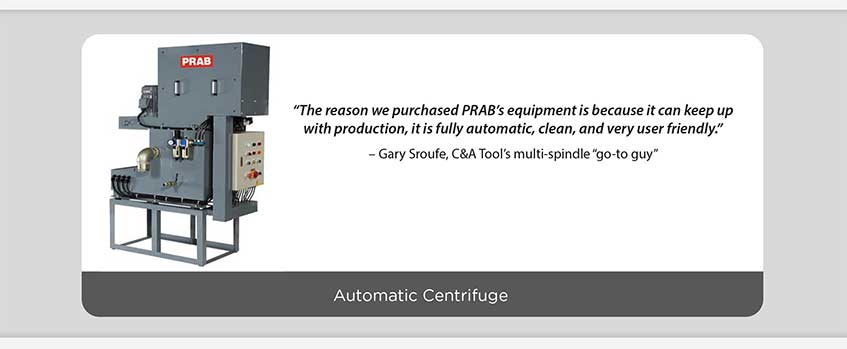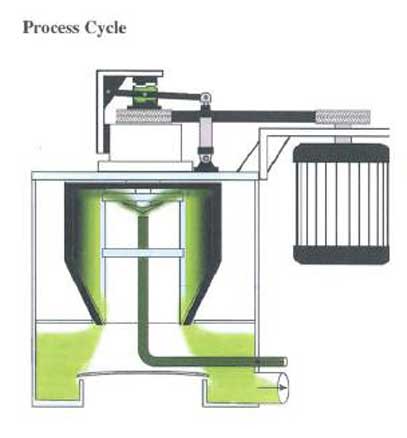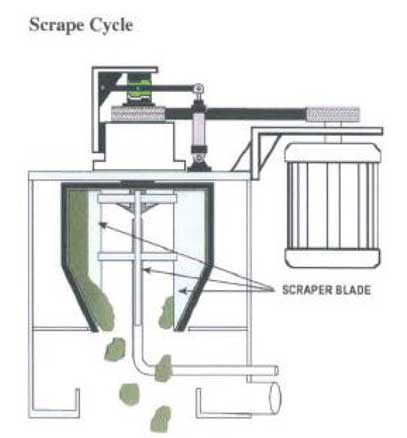Using no filters or consumables and very few moving parts, the PRAB Automatic Centrifuge moves solid particulate away from liquid and toward the rotor wall, where it is compacted and removed automatically during the pre-set cleaning cycle.

Features:
Benefits:
Centrifuge Operation
Feed enters at the dirty liquid inlet and progresses upward through the rotor body. Centrifugal force is applied to the liquid stream in the main body of the rotor, causing solid particulate to move toward the rotor wall. Solids are deposited at the rotor perimeter while clean liquid overflows through the top of the rotor. The clean overflow discharges at atmospheric pressure via gravity through the clean liquid outlet. Solids deposited in the rotor are compacted by centrifugal force and allowed to build up until they are removed during the cleaning cycle. A feed timer and a parts cycle counter determine when the cleaning cycle will be initiated. Maintenance personnel set these devices during start-up or routine production changes.
During the feed cycle, the lower cabinet is flushed continuously with dirty liquid to minimize the accumulation of solids in that area. When the feed timer completes its cycle or the parts counter reaches a preset number, the feed pump shuts down and stops the flow to the centrifuge. The drive motor is de-energized and the rotor coasts to a full stop. Any residual liquid remaining in the rotor drops to the lower cabinet and then drains back to the process tank.
The accumulated solids are removed from the rotor in the following manner: First, a solenoid valve energizes and the drain plate is pneumatically retracted. This movement opens the bottom of the rotor to the sludge bin below. A second air solenoid pneumatically operates the stopper assembly which locks the rotor in position and engages the scraper drive. The clockwise and counterclockwise rotations of the scraper clean the solid particulate from the walls of the rotor, causing the solids to drop into the sludge drum below. After the sludge has been removed from the rotor, all of the above operations are reversed and the centrifuge returns to full speed. The feed pump starts after a few seconds delay, allowing the rotor to reach operating speed. Normal operation will continue until the system is shut down.


Applications: